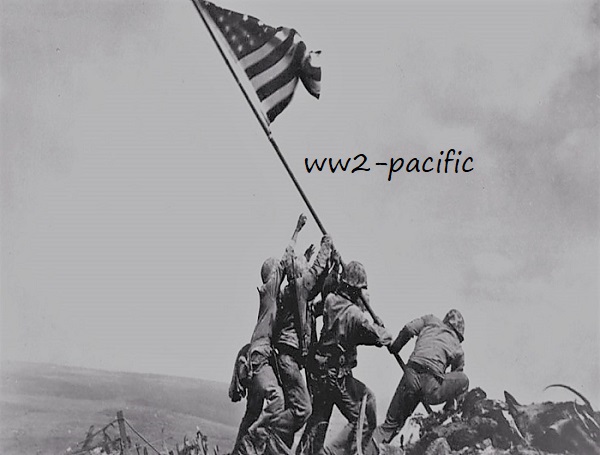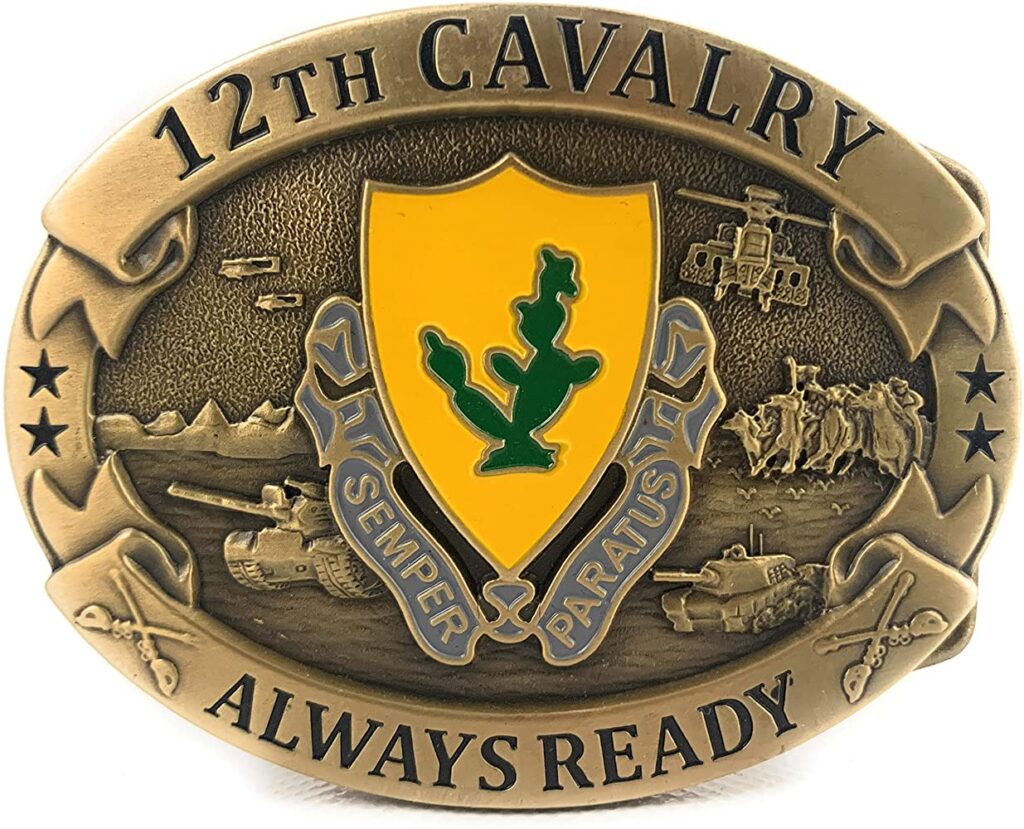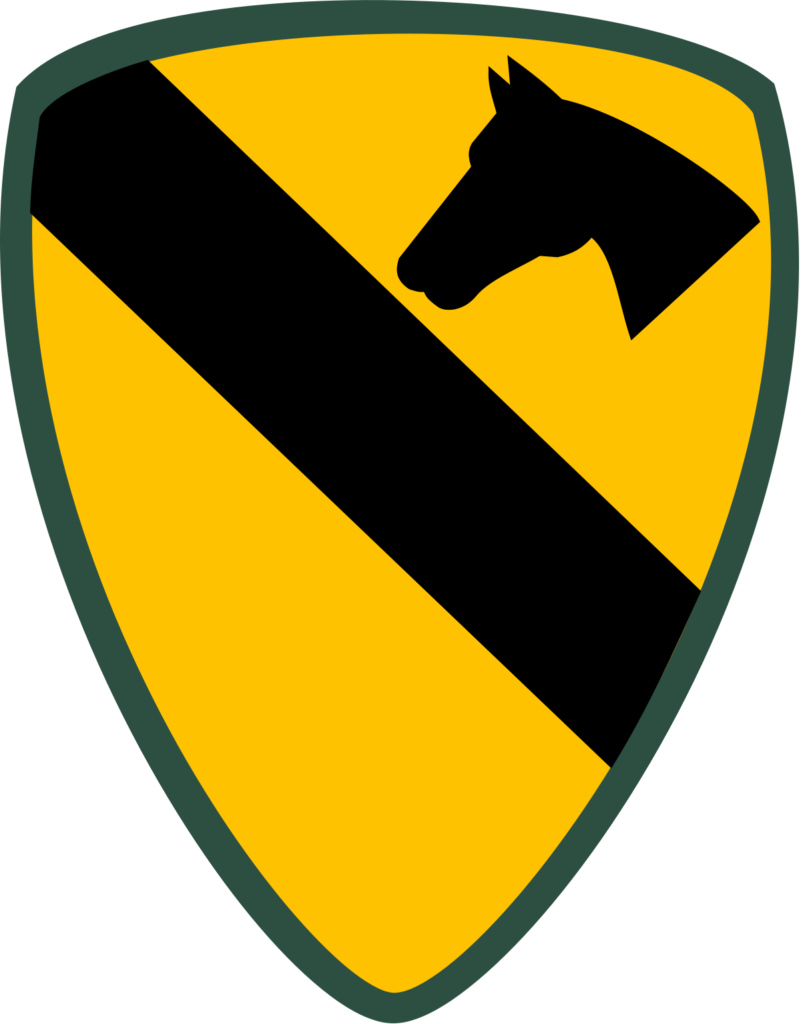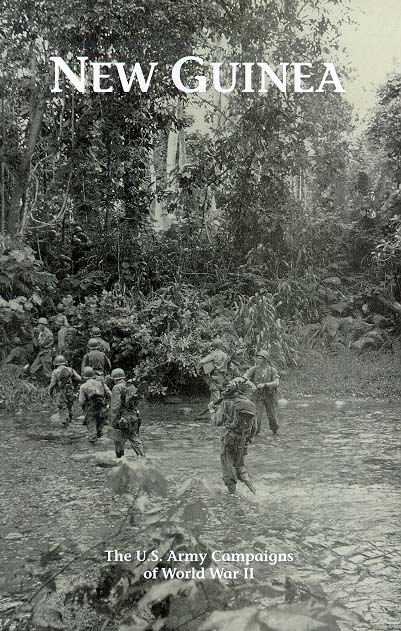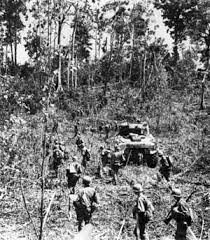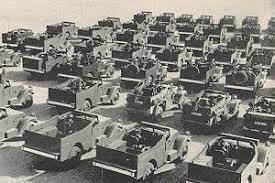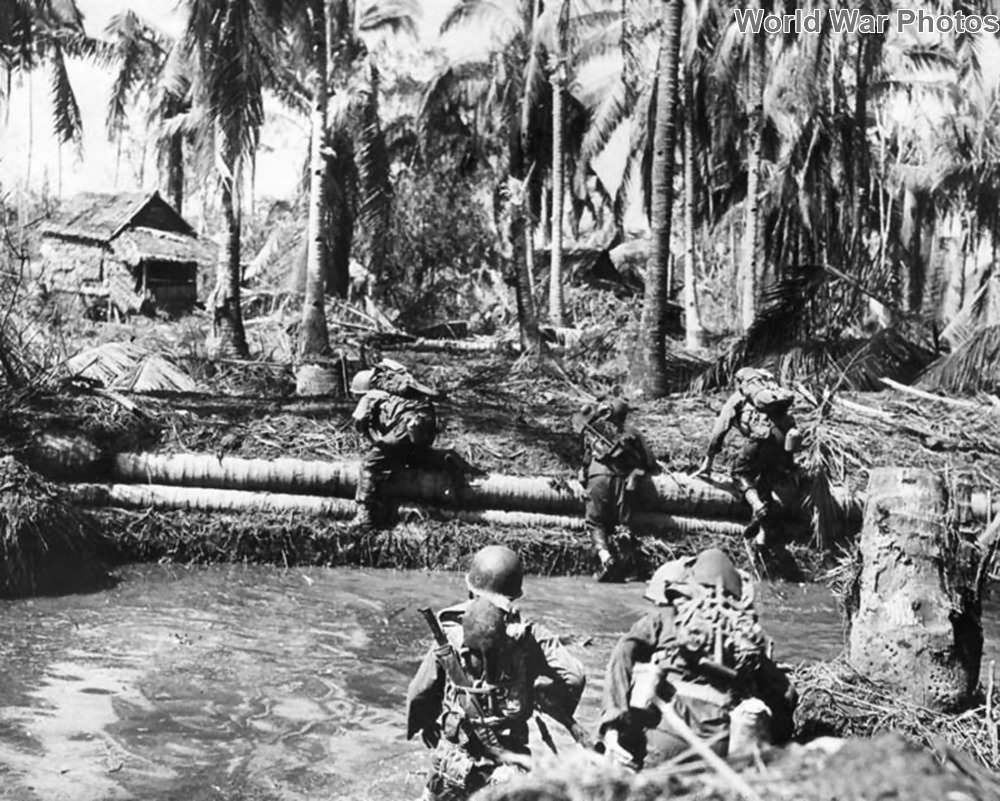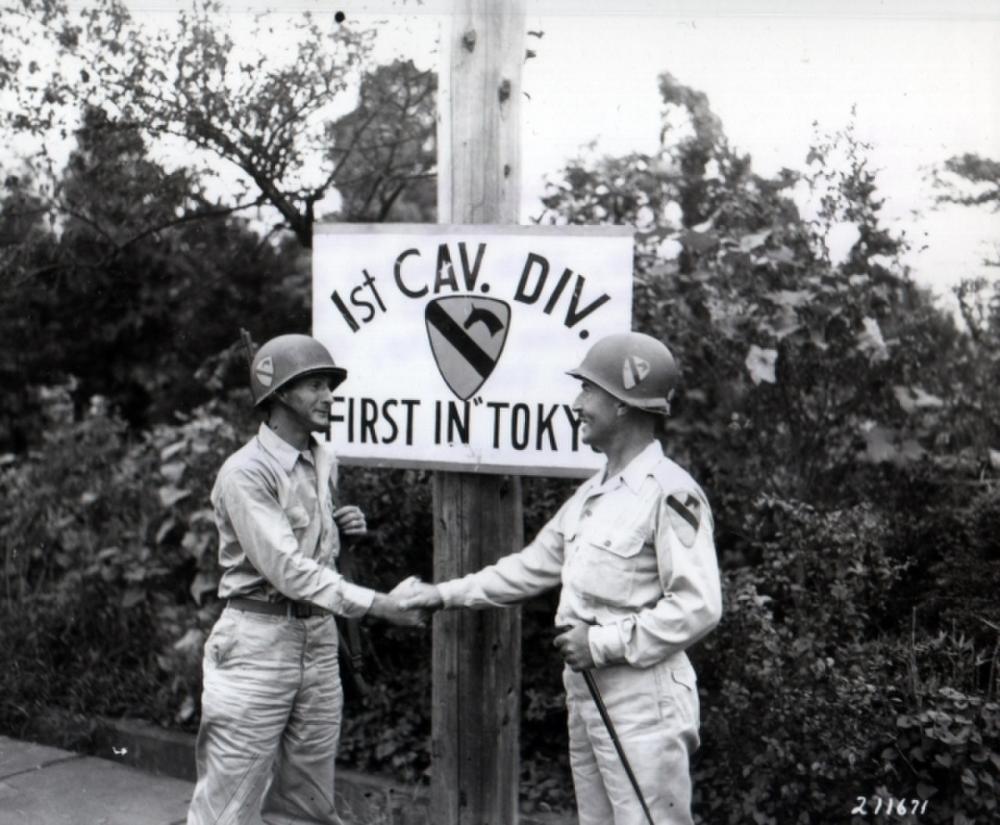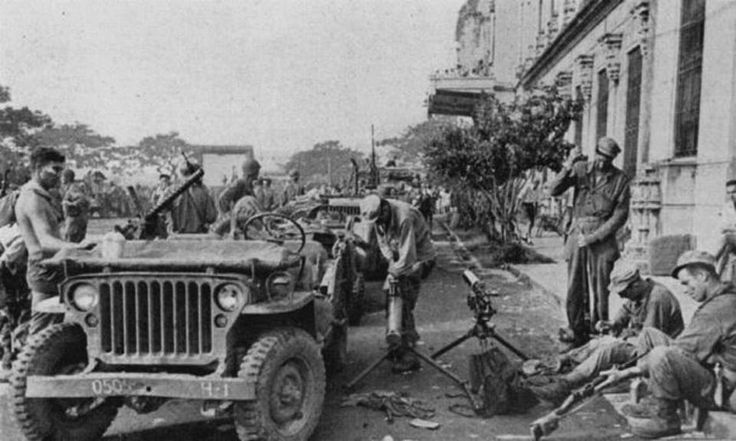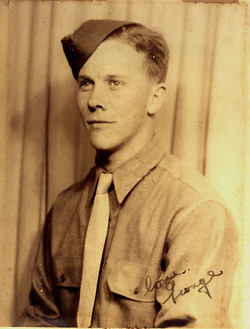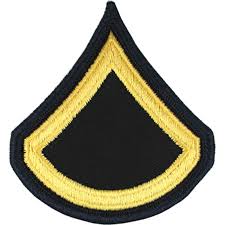Rank and Name, Private First Class George David Brown.
Unit/Placed in, 12th Cavalry Regiment, 1st Cavalry Division, United States Army.
George Army life was in the 12th Cavalry Regiment, after his Service in the Army he went in the Navy in the Seabees to Construct Navy bases.
George is born on 19 Nov. 1924 in Buffalo, New York.
Father, Kendal Harold Brown.
Mother, Louisa Olive (Church) Frogel .
Brother(s), William Church, Robert Leroy Brown and Harold Kenneth Brown.
George enlisted the service in New York with service number # 34782148.
George survived the war and died on 1 Jan. 2001, he is honored with Combat Medical Badge, Good Conduct medal, Marksman ship Badge Rifle, Philippine Liberation Medal with 2 Bronze Stars, Asiatic-Pacific Campaign Medal with Bronze Arrowhead, WWII Victory Medal.
George is buried/mentioned at Southern Memorial Park
North Miami, Miami-Dade County, Florida, USA.
Thanks to, https://1cda.org/history/history-12cav/
Jean Louis Vijgen, ww2-Pacific.com ww2-europe.com
Air Force Info, Rolland Swank.
ABMC Website, https://abmc.gov
Marines Info, https://missingmarines.com/ Geoffrey Roecker
Seabees History Bob Smith https://seabeehf.org/
Navy Info, http://navylog.navymemorial.org
POW Info, http://www.mansell.com Dwight Rider and Wes injerd.
Philippine Info, http://www.philippine-scouts.org/ Robert Capistrano
Navy Seal Memorial, http://www.navysealmemorials.com
Family Info, https://www.familysearch.org
Info, https://www.pacificwrecks.com/
Medals Info, https://www.honorstates.org
Medals Forum, https://www.usmilitariaforum.com/
Find a Grave, https://www.findagrave.com
Tank Destroyers, http://www.bensavelkoul.nl/
WordPress en/of Wooncommerce oplossingen, https://www.siteklusjes.nl/
Military Recovery, https://www.dpaa.mil/
1st Cavalry Division in the Battle over New Guinea and Philippines.
In February 1943, the entire 1st Cavalry Division was alerted for an overseas assignment as a dismounted unit. An impatient 1st Cavalry Division was dismounted and they were processed for movement to the Southwest Pacific Theater as foot Soldiers. In mid-June 1943, the last troops of the division departed Fort Bliss, Texas for Camp Stoneman, California and later on 03 July, boarded the USAT “George Washington” and sailed out of the Golden Gate, San Francisco, California an route for Brisbane, Australia and the Southwest Pacific.
On 24 July, three weeks later, the division arrived at Brisbane and began a fifteen mile trip to their new temporary home, Camp Strathpine, Queensland, Australia. The division received six months of intense combat jungle warfare training at Camp Strathpine in the wilds of scenic Queensland and amphibious training at nearby Moreton Bay. On 15 January 1944, the regiment was ordered to leave Australia and sail to Oro Bay, New Guinea, arriving on 25 January 1944. Camp Borio was established, where jungle training and operations in support of the 1st Marine was performed. After a period of staging in New Guinea, it was time for the 1st Cavalry Division to receive their first baptism of fire.
On 27 February, Task Force “Brewer”, consisting of 1,026 Troopers, embarked from Cape Sudest, Oro Bay, New Guinea under the command of Brigadier General William C. Chase. Their destination was a remote, Japanese occupied island of the Admiralties, Los Negros, where they were to make a reconnaissance of force and if feasible, capture Momote Airdrome and secure a beachhead for the reinforcements that would follow.
Just after 0800 hours on 29 February, the 1st Cavalry Troopers climbed down the nets of the APD’s and into the LCM’s and LCPR’s, the flat bottomed landing craft of the Navy. The landing at Hayane Harbor took the Japanese by surprise. The first three waves of the assault troops from the 2nd Squadron, 5th Regiment reached the beach virtually unscathed. The fourth wave was less lucky. By then the Japanese had been able to readjust their guns to fire lower and some casualties were suffered.
After a period of staging in New Guinea, the 12th Cavalry Regiment departed from New Guinea as a part of the combat reinforcements of the Admiralty Campaign. On 02 March, the Regiment embarked at Cape Sudest, New Guinea in four LSTs and moved to join the forward forces of the 1st Cavalry Division, On 06 March, the 12th Cavalry Regiment along with the 271st Field Artillery Battalion landed in Los Negros Island with minimal resistance. Under cover of the B-25 bombing, they joined up with the 2nd Squadron of the 7th Cavalry Regiment to seize the Salami Plantation and Salami Beach, about three miles north of the Momote Airdrome. The Japanese, expecting an amphibious landing were surprised by the attack from the rear, had their guns directed toward the beach.
The next day, the 12th Cavalry Regiment and the 2nd Squadron of the 7th were joined by the 5th Cavalry Regiment to seize Papitalai Mission and Lombrum Point before the Japanese could complete building a well-fortified defense. In retreat, the enemy left behind large amounts of their food and equipment. On 08 March, the 12th Cavalry liberated 69 Sikh Soldiers who had been held captive by the Japanese and used as forced labor since the fall of Singapore on 15 February 1942.
With attention focused on the opening of new operations at Hauwei Island, the 12th and the 5th Regiments began working their way south of Papitalai Mission through the rough hills and dense jungles in hand to hand combat. Tanks sometimes would give welcome support, but mostly the Troopers had to do the dangerous job with small arms and grenades.
On 22 March, two final attacks wiped out the remaining resistance on Los Negros. Two squadrons of the 5th and the 12th overran enemy positions west of Papatalai Mission. Once again it was tough fighting with the terrain, overgrown with thick canopies of vines, favoring the Japanese. On 24 March, the 5th and 12th overcame fanatical resistance and pushed through to the north end of the island. On 28 March, the battles for Los Negros and Manus were over, except for mop up operations.
On 31 March, the 1st Squadron moved from Lombrum Point to Mokerang Peninsula and on 01 April launched an attack was made on Korunist and Ndrilo Islands which lay just off the western tip of Mokerang Peninsula, Los Negros. After land, sea and air forces had given those islands a hard pounding, the Troopers transported in eighteen native canoes, four captured Japanese collapsible boats and sixteen engineer half boats landed unopposed. On 03 April, the 2nd Squadron moved to Rambuto Island, southeast of Los Negros to search out and destroy small bands of enemy. Because of the numerous coral reefs, the Troopers carried their supplies and equipment as they waded ashore in waist high water. On 07 April, the 1st Squadron was sent on a combat mission to Pak Island where they were met with light resistance.
The Admiralty Islands campaign officially ended on 18 May 1944. Japanese casualties stood at 3,317 killed. The losses of the 1st Cavalry Division included 290 dead, 977 wounded and 4 missing in action. Training, discipline, determination and ingenuity had won over suicidal attacks. The First Cavalry Troopers were now seasoned Veterans.
On Columbus Day, 12 October 1944, the 1st Cavalry Division sailed away from its hard earned base in the Admiralties for the Leyte invasion, Operation King II. On October 20, the invasion force must have appeared awesome to the waiting Japanese as it swept toward the eastern shores of Leyte. Precisely at H – hour, the first wave of the 1st Cavalry Division hit the beach at 10:00. The landing, at “White Beach” was between the mouth of the Palo River, to the south and Tacloban, the capital city of Leyte. Troopers of the 5th, 7th and 12th Cavalry Regiments quickly fanned out across the sands and moved into the shattered jungle against occasional sniper fire.
The fighting near the beaches was still was underway when General MacArthur and Philippines President Sergio Osmena waded ashore in ankle deep water. MacArthur soon broadcast his famous message to the Filipinos: “People of the Philippines: I have returned. By the grace if Almighty God, our forces stand again on the Philippine soil – soil concentrated in the blood of our two peoples… Rally to me! Rise and strike!”. To the Philippine guerilla forces and the 17 million inhabitants, it was the news they had long awaited.
The missions of the 1st Cavalry Division in late October and early November included moving across Leyte’s northern coast, through the rugged mountainous terrain and deeper into Leyte Valley. The 1st Brigade had severe fighting in most difficult terrain when the 5th and 12th Cavalry secured the central mountain range of Leyte. It was particularly hard going in these mountains. It was slip and slide all the way over the toughest terrain interspersed with fighting the Japanese. In spite of the 5th and 12th Cavalry Regiment accomplished their mission well.
The Japanese had been able to put an additional 20,000 combat troops ashore on the west side of Leyte shortly after the First Team’s invasion. On 09 November, the 12th Cavalry regiment pushed into the hills west of Leyte Valley and launched an offensive against the Japanese fortified positions to counter the ability of the enemy to be effective. On 15 November, the 2nd Squadron, 12th Cavalry Regiment got into an intensive fight with the Japanese who were well entrenched on Hill 2348, about two miles east of the Ormoc Pinamapoan Highway. The battle for Hill 2348 continued the next day and threatened to be a bloody stalemate. Individual Cavalrymen of “G” Troop advanced through heavy machine gun fire and began to silence the Japanese strongholds one by one.
On 20 November, the rest of the 12th Cavalry Regiment became heavily engaged around Mt. Cabungaan, about three miles south of Hill 2348. The enemy had dug in on the reverse side of sharp slopes. Individual Troopers were again faced with the task of searching out and destroying positions in the fog. On the night of 02 – 03 December, the battle of Hill 2348 reached its climax. The 2nd Squadron, 12th Cavalry Regiment suffered heavy casualties from the heavy machine gun fire, mortars and waves of troops in suicidal attacks. The Troopers counterattacked with devastating effort and the Japanese fled the hill in disarray.
During the next week the enemy fought defensive, delaying actions. On 19 December, the two squadrons of the 12th Cavalry regiment battled their way into the barrio of Lonoy, moving south the next day toward Cananga. The war seemed to speed up as the Troopers could use conventional infantry tactics in the open countryside. The troops advanced toward their final objective, the fishing village of Villaba on the Vissaan Sea. On 29 December the small barrio fell ending the long wet Leyte/Samar campaign was over except for mop up operations.
By 11 January 1945, the Japanese losses amounted to nearly 56,200 killed in action and only a handful – 389 had surrendered. Leyte had indeed been the largest campaign in the Pacific War, but the record to that was about to be shattered during the invasion of Luzon.
With the last of the strongholds eliminated, the division moved on to Luzon, the main island of the Philippines. On 26 January, conveys were formed and departed for the Lingayan Gulf, Luzon Island, the Philippines. Landing without incident on 27 January, the regiment assembled in an area near Guimba and prepared for operations in the south and southwest areas. On 31 January 1945, General Douglas MacArthur issued the order “Go to Manila! Go around the Japs, bounce off the Japs, save your men, but get to Manila! Free the internees at Santo Tomas! Take the Malacanan Palace (the presidential palace) and the legislative building!”.
Other units of the 1st Cavalry Division fought their way past the Japanese to Manila on 05 February. The 12th Regiment remained outside Manila, assigned to protect the northern flank and lines of communication. On 12 February, the regiment moved into Manila to join the rest of 1st Cavalry Division. For nearly a month after reaching the Philippines capital city, the division engaged in some of the roughest street fighting of World War II. By 03 March, the organized resistance was wiped out.
But once again, from 20 February to the 12 March, the Cavalry drew the difficult task of cracking the Shimbu Line a few miles east of Manila and securing a front from Taytay on the north to Antipalo on the south. The goal was to prevent Japanese reinforcements from reaching Manila. The 1st Cavalry Division fought regiment abreast as it destroyed the southern flank of the Shimbu Line. From north to south the units involved included the 5th, 7th, 8th and 12th Cavalry Regiments. Once the high ground was taken, the Troopers were relieved by the 43 Infantry Division and given a week of rest south of Manila.
02 April saw the beginning of the second phase of the Luzon Campaign. On 28 July, the final elements of the regiment closed in Sariaya and the Luzon Campaign was officially ended on 24:00 30 June. More than 14,000 Japanese had been killed and nearly 1,200 had been taken as prisoners. The 1st Cavalry Division had lost 680 Troopers, a remarkable low causality figure considering the violent fighting.
On 13 August, the 1st Cavalry Division was alerted that they were selected to accompany General Douglas MacArthur to Tokyo and would be part of the 8th Army in the occupation of Japan. On 02 September, the long convey of ships steered into Yokohama Harbor and past the battleship Missouri where General MacArthur would later receive the Japanese surrender party. At noon on 05 September 1945, a reconnaissance party headed by Colonel Charles A. Sheldon, the Chief of Staff of the 1st Cavalry Division, entered Tokyo. This embarkment was the first official movement of American personnel into the capital of the mighty Japanese Empire.
At 0800 hours on 08 September, a history making convey left Hara-Machida with Tokyo as their destination. Headed by Major General William C. Chase, commanding general of the 1st Cavalry Division, the party included a Veteran from each troop of the division. Passing through Hachioji, Fuchu and Chofu, the Cavalry halted briefly at the Tokyo City Limits. General Chase stepped across the line thereby putting the American Occupational Army officially in Tokyo and adding another “First” to its name; “First in Tokyo”.
The honor of the first enlisted man to enter the city officially went to a member of “D” Troop, 12th Cavalry, PFC Paul Davis of Fairland, Ottawa County, Oklahoma.
The first mission of the division was to assume control of the city. On 16 September, the 1st Division was given responsibility for occupying the entire city of Tokyo and the adjacent parts of Tokyo and Saitama Prefectures. The command posts of the 1st Brigade, 5th Cavalry and 12th Cavalry were situated at Camp McGill at Otawa, approximately 20 miles south of Yokohama. The 2nd Cavalry Brigade had its command post at the Imperial Guard Headquarters Buildings in Tokyo, while the 7th Cavalry was situated at the Merchant Marine School. The 8th Cavalry occupied the 3rd Imperial Guard Regiment Barracks in Tokyo. Division Headquarters and other units were stationed at Camp Drake near Tokyo.
In November 1945, the division assumed control of the repatriation center at Uraga, a port south of Yokohama. More than 560,000 Japanese military personnel and diplomatic and civil service officials returned home through the center. Over the next five years, the regiment was able to perform many valuable duties and services that helped Japan reconstruct and create a strong, viable economy. At such time in March 1949, the 12th Cavalry Regiment was relieved from the 1st Cavalry Division and inactivated at Otawa, Japan.
Philippine Liberation Ribbon
Criteria: Awarded to any service member, of both Philippine and allied militaries, who participated in the liberation of the Philippine Islands between the dates of October 17, 1944 and September 2, 1945. To be awarded the medal, a service member must have served in the Philippines for at least thirty days during the eligible time period, or must have participated in one of the following actions: Participation in the initial landing operation of Leyte and adjoining islands from October 7 to October 20, 1944; or Participation in any engagement against hostile Japanese forces during the Philippine Liberation Campaign of October 17, 1944 to September 2, 1945. Personnel who are awarded the medal for participation in the above mentioned operations are authorized a service star to the Philippine Liberation Medal. Personnel who earned the medal for general service during the eligible time period are awarded the medal without device.
